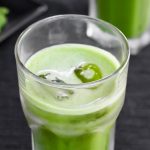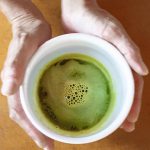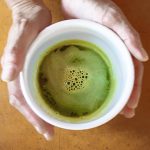
Learn to make matcha green tea, hot or iced from scratch at home without special equipment.
We share instructions, tips in video and text below.
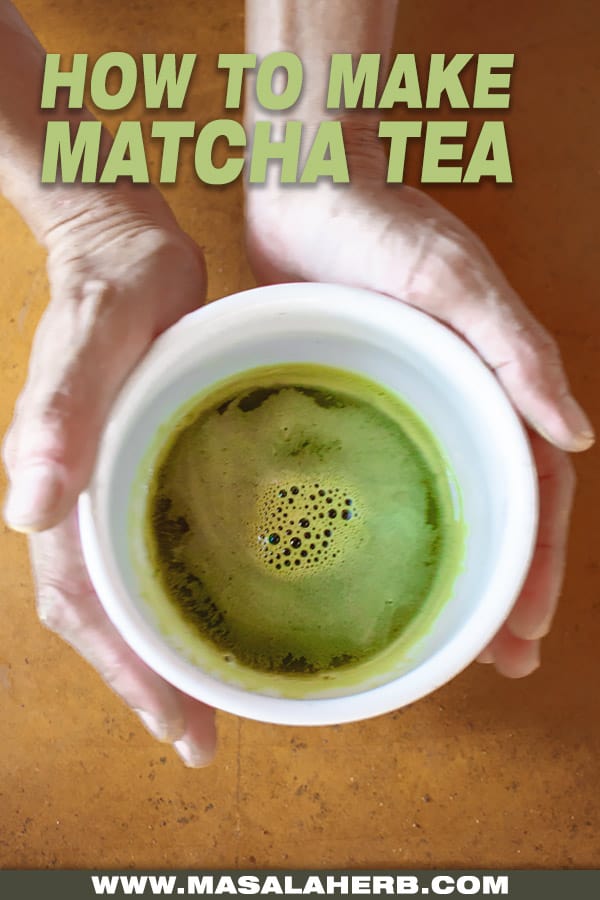
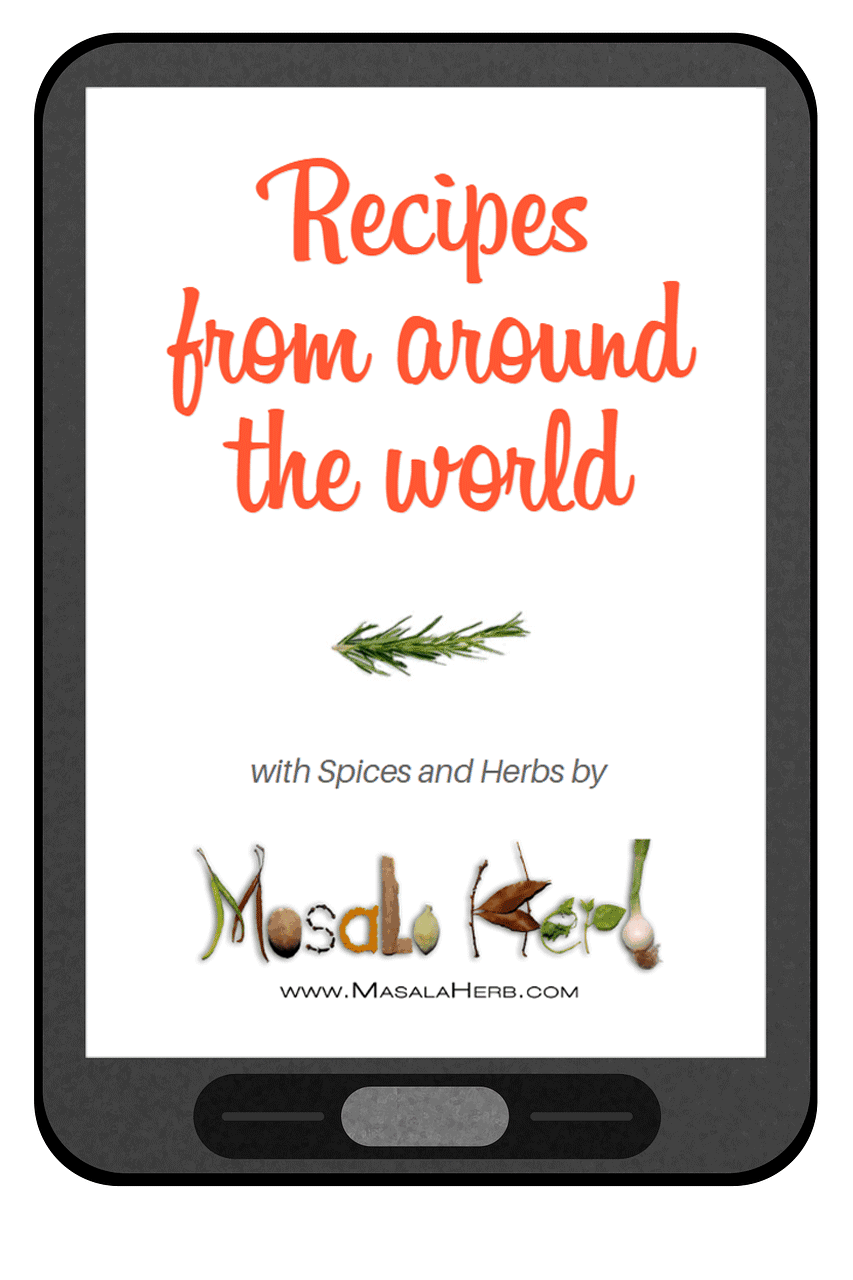
Global Food Recipes
with Spices and Herbs
Free E-Book available for a limited time. Grab yours now and get instantly inspired!
You missed out!
This is part of our Japanese food series, which includes authentic healthy recipes such as Miso soup.
We welcomed most recently Japanese food specialized from Tokyo to the masalaherb.com cultural food experts team!
Jump to:
📕 What is matcha powder?
Matcha is Japanese green tea powder, and it is made of special ground green tea leaves.
The tea shrubs grow in the shade in Japan and the leaves are processed differently compared to regular green tea.
Good quality matcha is also ground to a very fine powder. This is the major difference to regular green tea.
Matcha powder has a huge significance in Japan. Special tea houses prepare ceremonial grade teas in front of the customer.
The Japanese tea ceremony is a traditional Japanese art inspired by Zen Buddhism and Confucianism. It is known as chanoyu, sado or sadou in Japan.
The powder is also used in foods such as mochi rice cakes, regular cakes and ice creams.
Matcha has become popular in Western countries over the year. It is incorporated in cake batters, sweets, and beverages such as smoothies and the iced matcha latte.
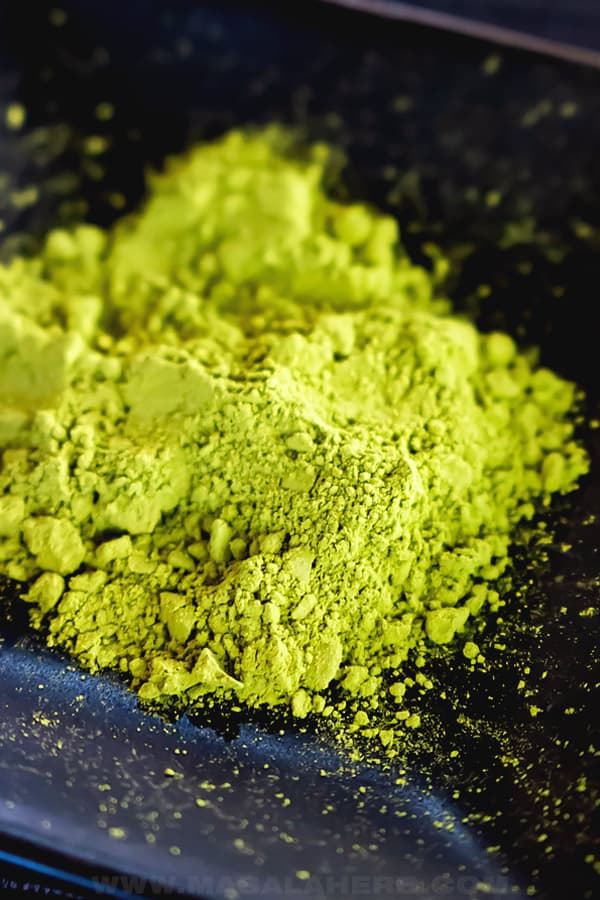
🍵 Quality and Buying Guide
There are 2 major matcha quality differences, premium and cooking grade.
Premium grade is used for the tea ceremony in temples and tea houses.
Cooking grade matcha is better used in foods, but it can be an option for tea preparation too if you don't have a choice.
The quality is reflected in the price.
Cheaper Matcha (cooking grade) can cost about 10 USD/ 10 EUR for 1 ounce/30 grams.
More expensive matcha can cost about 65 USD/ 60 EUR for 1 ounce/30 grams.
The brighter green the color of your matcha powder the better it is! This is an important buying aspect.
The finer it has been ground the better, also the way it was ground makes a difference. Stone-ground is always preferred but hard to get and pricey.
Organic matcha powder is another thing you can look out for when buying matcha powder.
Always buy matcha powder and not teabags.
Good matcha powder is so fine that it dissolves in the liquids and to activate the properties it needs to be shaken well, and you can hardly do that with tea bags. Besides, it's hard to see what they pack in those tea bags.
A good quality test is to shake the tea powder in cold or hot water, if there is lots of foam it's a good sign that this is a good grade of matcha powder.
🆚 Usucha VS Koicha
Usucha and Koicha are both traditional preparation styles for matcha and green tea. Both styles can be applied to matcha or green tea preparation.
Usucha (meaning thin) is a thin matcha version and koicha is thick matcha. The thinner version is a day to day matcha tea and koicha matcha is reserved for ceremonies.
Ceremonial matcha is thicker and much more intense in flavor. It has umami elements, and it's less bitter and has increased sweetness.
Today we will focus on Usucha matcha in this how to make matcha tea recipe.
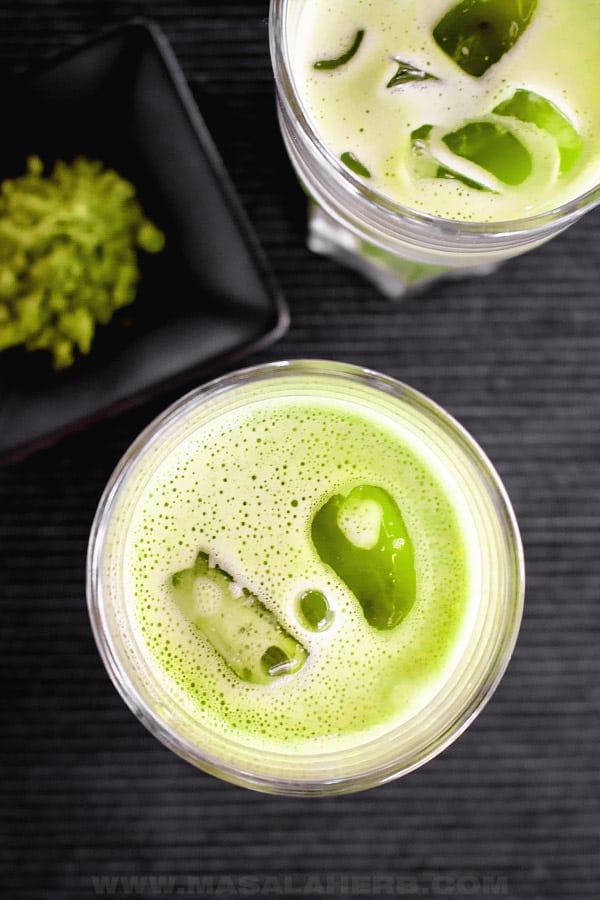
🥄 Matcha Tools
For the easy no tool version:
This simple easy version doesn't require special equipment, so you won't need a traditional bamboo whisk to make this recipe.
You just require an insulated bottle or a protein powder shaker or a bar shaker or simply a bottle with a cap.
Tools for the traditional Matcha version:
For a perfect cup of matcha, you will need a small bowl or tea bowl – in Japan they use a matcha bowl called chawan.
With a bowl get a traditional bamboo whisk called a chasen and the scoop or spoon is known as a chashaku. You can get a matcha whisk spoon set too.
Instead of shaking you will have to whisk your tea so that not lumps are formed. It comes from the wrist! You can also sieve the matcha powder before you whisk it into water.
🔪 How to make easy matcha tea? (hot or iced)
Japanese people usually don't prepare matcha at home but rather go out for a cup of matcha to a tea house. Preparing regular green tea at home is more common over there.
But that shouldn't stop you from preparing matcha tea at home! Especially if you don't live in Japan with a tea house around the corner.
Choose if you want a hot (traditional) cup of matcha green tea or if you want an iced (modern) matcha tea.
Hot matcha green tea
Boil water in a kettle.
Place matcha powder and hot water into your bottle or shaker.
Close the bottle or shaker and shake vigorously for 2 minutes or so.
Pour into a teacup. The matcha tea should be well combined, there should be no sediments, and it must be frothy.
The frothy part is important because it's a sign of quality, and it's also more presentable that way.
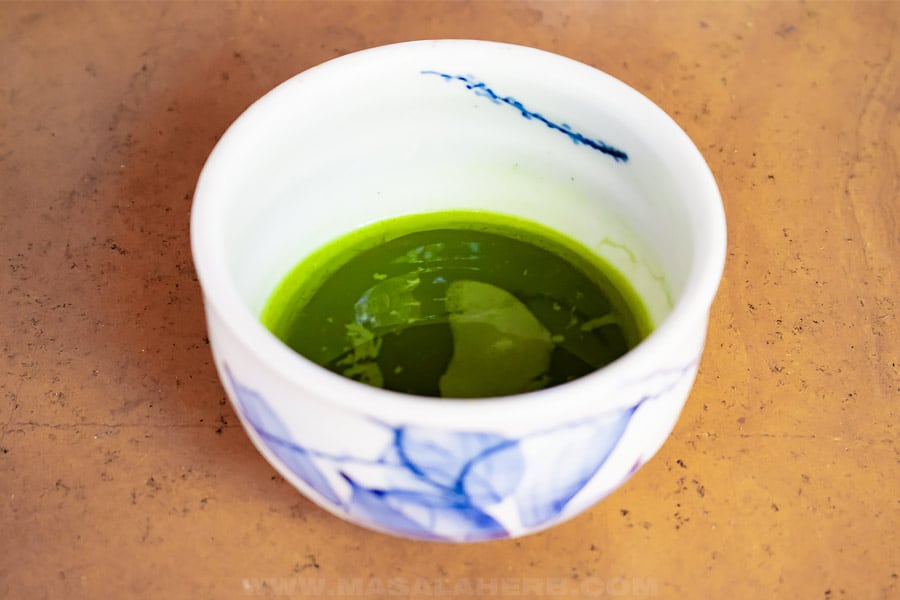
Iced matcha green tea
Place matcha powder, ice cubes, and cold water into your bottle or shaker.
Close the bottle or shaker and shake the same way you did with the hot tea.
Pour into a glass and serve cold. Also, here the powder needs to be well mixed into the liquids, but the froth is not a necessity, but it's always a good sign. 🙂
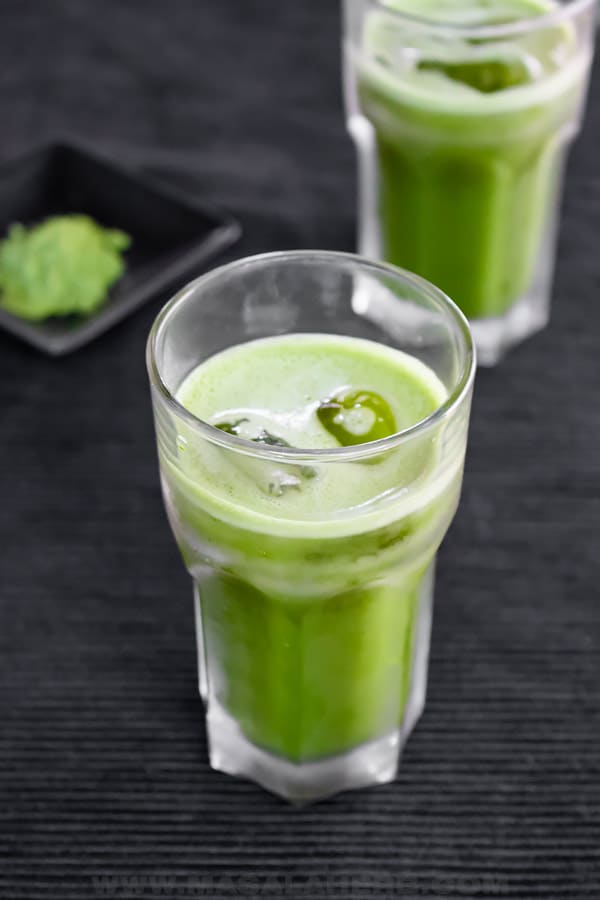
💡 Intake recommendation
Matcha Tea is great for your well-being because of its dietary properties, and you can make it help your weight loss.
It contains caffeine, and therefore it's best to take it in the day.
You can make yourself a cup in the morning hours as this seems to be the most suitable time.
It is not recommended to have matcha tea before you go to sleep because it contains caffeine.
Also, the saying: “The dose makes the poison.”, can be applied here. Don't overdo it, 1-2 cups a day are enough.
💭 FAQs
Matcha comes from green tea leaves, but the leaves grow in the shade and are prepared differently to conventional green tea leaves. A regular tea garden, such as Japanese, Chinese, or Indian tea gardens are in the open and can produce black, white and green tea. That's the difference.
Japanese put Matcha in water, never milk. Western coffee and tea chains created milk-based matcha beverages, but these are not from Japan and not traditional drinks. You can, however, add milk instead of milk if you want to try new flavors.
While coffee can stain your teeth when consumed over a longer period of time, matcha won't do that to your teeth. So, it's safe to say that your teeth won't turn green.
Just like green tea, matcha is stuffed with antioxidants. That means, your cells are regenerated and fixed, and you are less prone to get sick.
Try to avoid drinking matcha on an empty stomach because it increases acidity. Consuming large quantities is also not advised because you can get stomach cramps.
Shizuoka and Kyoto are known for growing the best matcha green tea in Japan. Organic Shizuoka matcha green tea tastes superior, light and refreshing. If you are trying to get into gourmet matcha tea, then this is a good start.
👁️ More green and healthy beverages
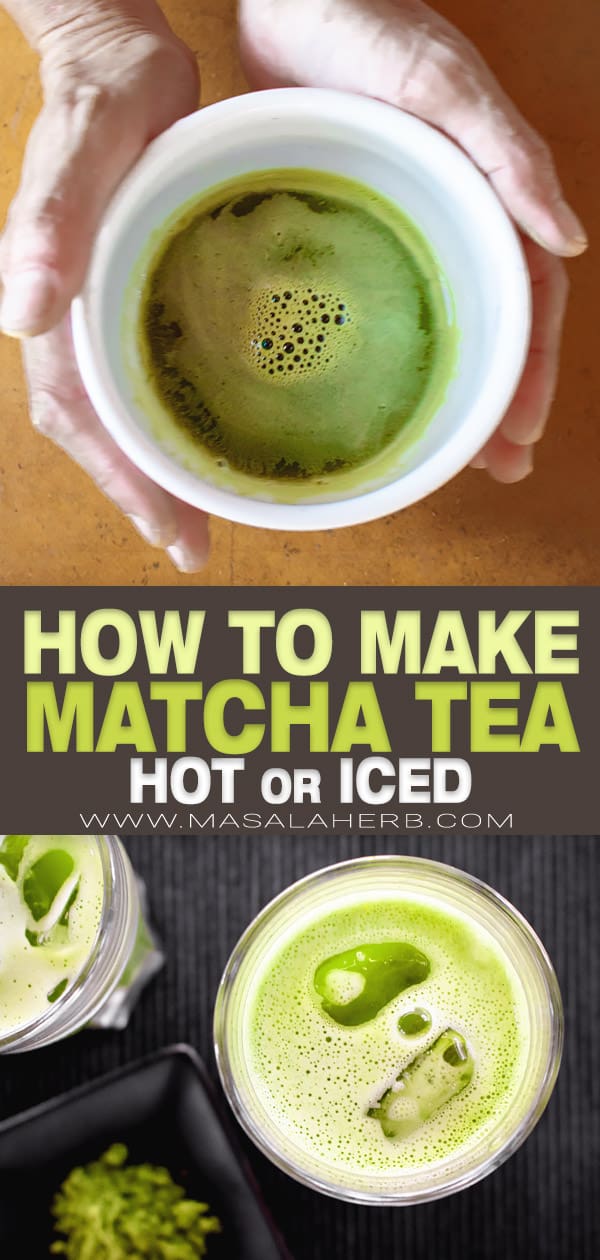
📖 Recipe
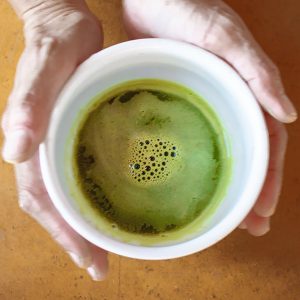
Matcha Green Tea Recipe
Ingredients
Hot Matcha Tea:
- 2 Teaspoon Matcha Powder
- 1 Cup Water
Iced Matcha Tea:
- 2 Teaspoon Matcha Powder
- ⅔ Cup Water
- 6-8 Ice Cubes
Instructions
For the hot matcha tea:
- Place matcha powder into bottle.2 Teaspoon Matcha Powder
- Cook water for 2-3 minutes and not more. This is important so to retain nutrients and flavors.1 Cup Water
- Pour water into a bottle and close with the lid.
- Shake well for 2-3 minutes and pour directly into a tea cup. The more froth it has the better!
For the iced matcha tea:
- Place matcha powder into the bottle.2 Teaspoon Matcha Powder
- Pour water with ice cubes into the bottle and close with the lid.⅔ Cup Water, 6-8 Ice Cubes
- Shake well for 2-3 minutes and pour into prepared glasses. Serve cold.

